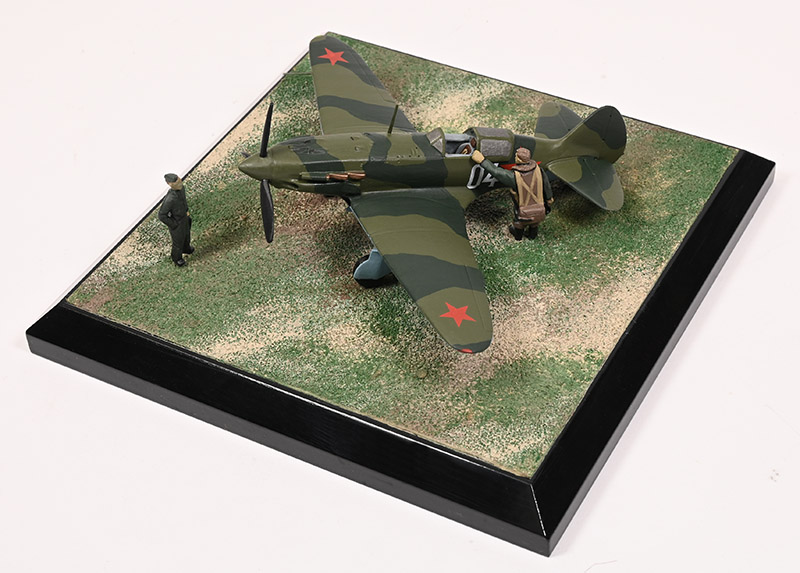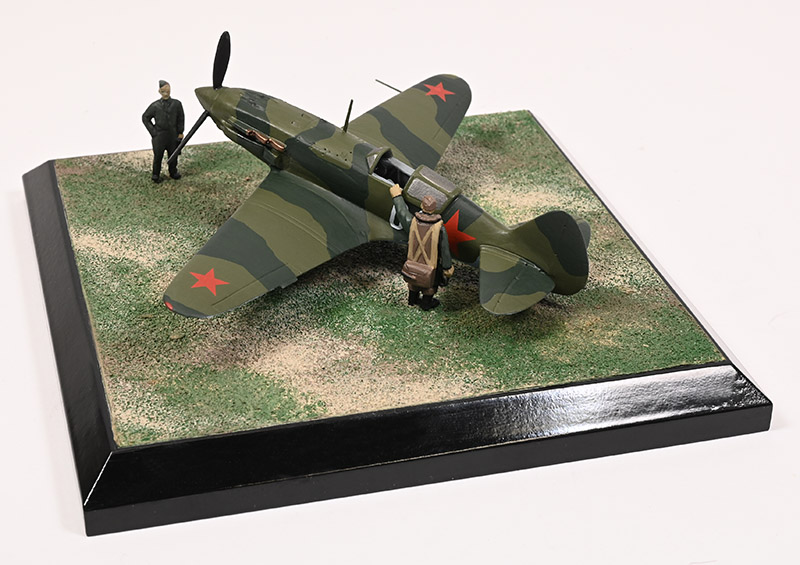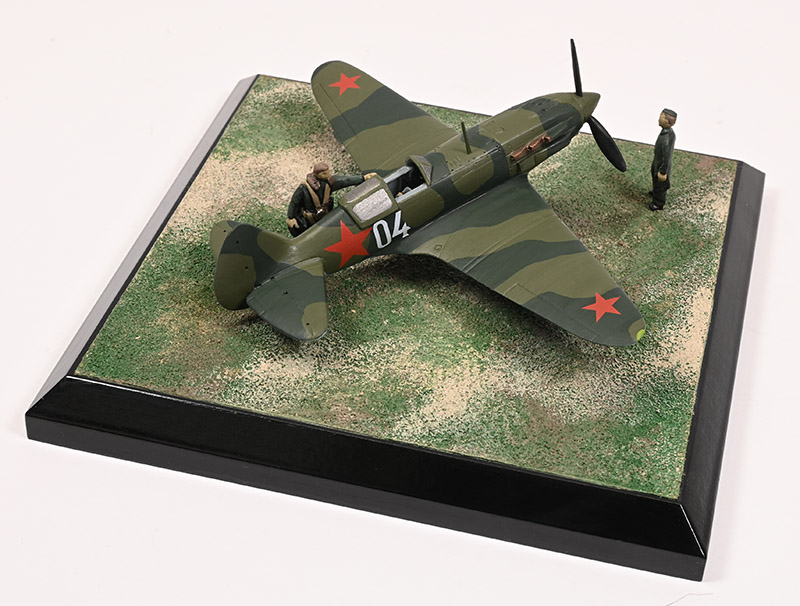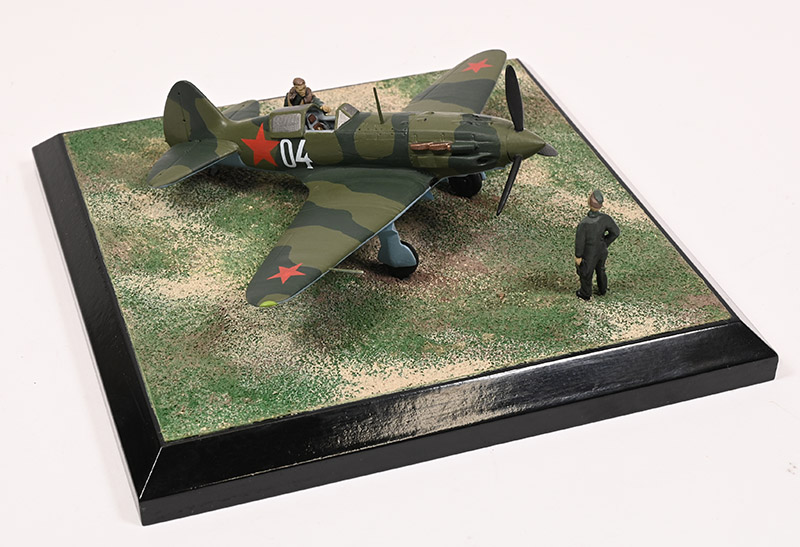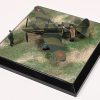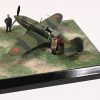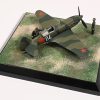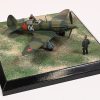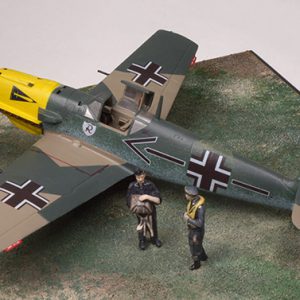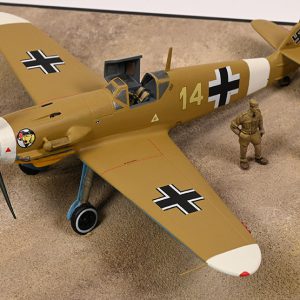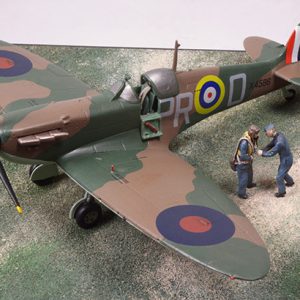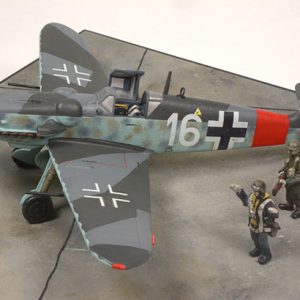Mikoyan-Gurevich Mig 3, White 04
7 IAP, Captain Sergey N. Polyakov, Leningrad, Summer 1941
Russian fighter aircraft manufacturer MiG was formed in 1939 by its two founding engineers Artyem Ivanovich Mikoyan and Mikhail Iosifovich Gurevich. The combination of their two names contributing to the company name MiG. The MiG 3 was developed from the MiG 1 which in turn had evolved from their first aircraft the I-200, a design to meet the need for a high altitude interceptor. Constructed from a combination of plywood and aluminium, the MiG design made for a good looking aircraft. However, instead of being used for high altitude work it was mainly deployed to combat Luftwaffe fighters during the German advance into Russia in 1941/42. The MiG 3 was a match for the Messerschmitt Bf 109F in most combat situations but being heavier was less agile.
The Mig 3 had a composite structure airframe including aluminium alloy parts, wooden parts covered with tissue, fabric covered surfaces, and steel side plates. The internal fuselage struts were made of welded chromo-molybdenum steel tubes of slightly oval section. The rear fuselage had a wooden structure as did the outer wing sections. The metallic components were affixed to the wood by plates with two lines of bolts. The Mig 3’s AM-35A engine was specifically designed for high altitude use by the chief designer Mikulin. It equipped both the single engined fighters MiG-1, MiG-3 and the four engined bomber Petlyakov Pe-8. Most MiG 3s were armed with three synchronised guns over the nose: one UBS 12,7 mm machine gun in the central position and two smaller ShKAS 7,62 mm machine guns on each side. From 20th February 1941, a new Mig 3 variant was introduced with two further 12,7 mm BK guns in under-wing pods, each with 145 rounds. This additional armament proved unsatisfactory, as the weight increased by 150 kg. Aiming at high g manoeuvres was imprecise due to torsion flexing of the wings. Most of these gun pods were removed when the aircraft arrived at the units.
White 04 served with 7 IAP (Istrebitel’nyi Aviatsionniy Polk; Fighter Aviation Regiment) and was piloted by Captain Sergey N. Polyakov, a veteran of the Spanish Civil War and the Winter War with Finland. Sergey Polyakov was a Muscovite who participated in the defence of Leningrad. Later in the war, Polyakov decided to convert to the Ilyushin Il-2 Stormovik. Soon appointed CO of 174th Attack Air Regiment, he had flown a total of 42 combat sorties by the time of his death in action on 24th December 1941. Polykov perished at the controls of a U-2 liaison biplane when he strayed into a German air raid whilst flying from Cape Kapitolovo to Kasimovo. He was posthumously awarded the title of Hero of the Soviet Union.
Visible improvements of “typical” late MiG 3s versus the early variants included a modified engine cowling with lever instead of Dzud locks, two longitudinal nose fairings for the lateral gun barrels, automatic wing slats noticeably improving the flight characteristics with regards to spinning, and the introduction of fully closed and bulged doors for the tail wheel.
Wartime photos of White 04 indicate an airframe of an early style with at least one late variant feature. No under-wing gun pods are visible. White 04 has the early style engine cowling, gun fairings and exhaust stacks, includes a radio mast and wires, but has the bulged tail wheel doors indicative of late version MiG 3s. The introduction of banded camouflage, applied as a factory finish, was more or less contemporary with the outbreak of war and with the introduction of the late type MiG 3s. White 04 wears a camouflage scheme with an unusual distribution of bands which was probably applied in the field. VVS A-II green, dark green and light blue paints were the candidate finishes on this airframe, with possible application of black patches. The red stars painted on the upper wings, denote a prewar-built aircraft.


